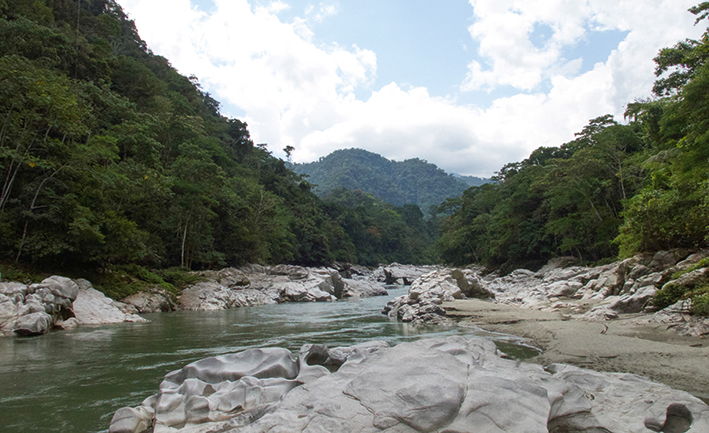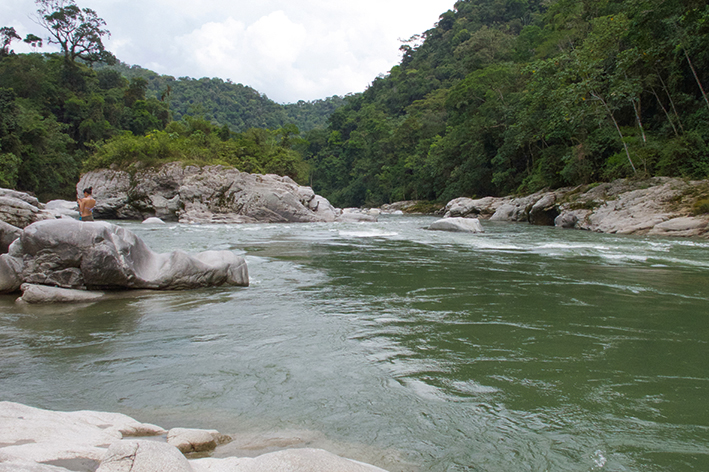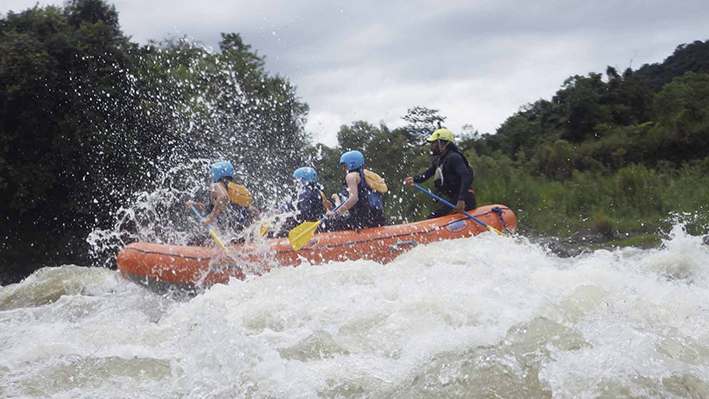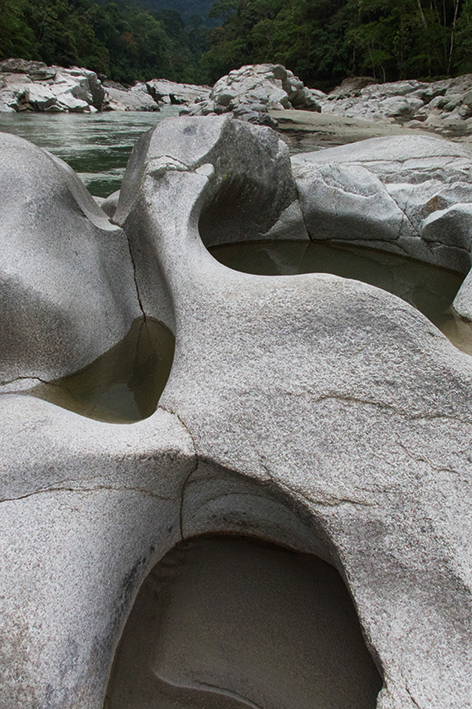A HIKE IN THE AMAZON BASIN
The Jatunyacu river is esteemed one of the best for rafting in Ecuador. It´s in Napo province, inside the Llanganates national park, and its quichua name means “big river”. Quichua is the most common indigenous language in Ecuador. Besides rafting, the landscapes along the river are so surprising that they are another attraction for visitors.
You can enjoy the Jatunyacu river several ways. As mentioned before, one is rafting. The waterflow is appropriate for beginners as well as experienced rafters. In either case, it´s always recommended to hire a tourist operator with knowledge and experience in this river.
Imagine Ecuador offers several adventure tours. The rafting on the “big river” tour starts at 8:30 a.m. and ends around 4 p.m., depending on the tourists´ category. A 45 minute ride through the jungle takes you to the base camp where the required safety lessons are given.
The course naturally has some rapids guaranteed to pump up your adrenalin and some peaceful stretches to rest and recover. You raft alongside sheer cliffs and past a hidden canyon, always encompassed by that mysterious deep green color that pervades the Amazon basin. A wonderful riverside beach is the perfect place for lunch before continuing down the afternoon course. The trip ends in the city of Tena, capital of Napo province.
The cost per person is 65 dollars, including a certified guide, all the necessary equipment, transportation from and back to the hotel, lunch and the inevitable photographs. Minimum age is 12 years and all tourists must be in good health. IDs or passports are required. Packing recommendations include bathing suits, towels, insect repellant, water and sunglasses.
Rafting no doubt is an adventurous experience. For a more relaxed outing, especially with small children, one option is to visit Laguna Azul (blue lake), approximately one hour from Tena. Tourists can drive to Laguna Azul or take public transportation.
It´s a marvelous scenery. At the entrance you will bump into stands offering local food. Some of these offerings are rather exotic, to say the least, such as chontacuros (worms that live in the chonta wood), either raw or fried. Crossing a rustic bridge leads to the hiking path which ends among natural lagoons of clear and refreshingly cool water.
Laguna Azul can be just a place to rest or to continue exploring the jungle. There are more lagoons upriver and these are fun for kids and adults. Weekends always bring a sizeable number of visitors, so the best time to take advantage of Laguna Azul is during weekdays.
Walking back, after crossing again that rustic bridge, we continue downriver until we arrive at La Playa (the beach), where we are amazed by its pitch black sand. As we come closer to the river and look back, we notice gigantic volcanic rocks. These were launched into the air in the last eruption of the Cotopaxi volcano back in 1877.
These rocks have surreal textures and special coloring that combine to create an optical illusion that makes you believe they are malleable. As we stop to think how powerful must have been that eruption that could send rocks this size so far from the Andes highlands to the Amazon jungle, we realize this a unique place.





